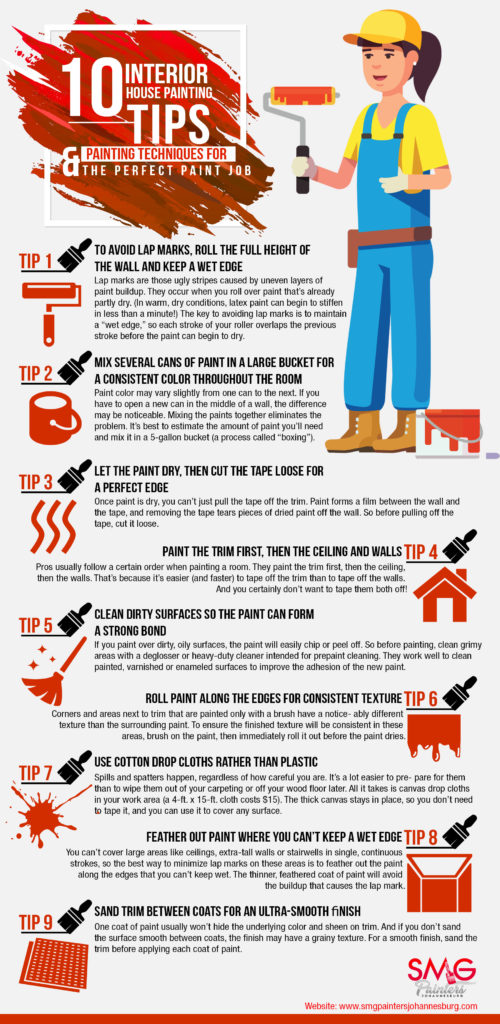- December 23, 2017
- Posted by: Gashwell Sibanda
- Category: Uncategorized

Learning how to paint can be very challenging and fun at the same time. The most important thing is to understand what needs to be done, when, and how it should be done. Here are some useful tips that will come in handy when trying to improve your house painting skills.
Always Clean Up
The first step in any painting project is to clean the surface. Get a deglosser or heavy-duty cleaner and work on removing dirt or oil from the surface. Detergents and cleaning methods will get the painted, enamelled, or varnished surface spotless. In the process, it will improve adhesion of the new paint.
Cover up
While going about your painting, spills and spatters are bound to occur even if you are careful. To prevent it, cover up the surfaces and equipment that you don’t want paint on. Look for cotton drop cloths and spread them on your carpet or wood flooring. Good thing is that they do not need to be taped in place.
Boxing will save you time and money
This is where you estimate the amount of paint required for a project, buy enough, and mix it all at once. The aim is to avoid interrupting the job halfway to go and buy more paint. It might result in a noticeable difference in the painting that wouldn’t be a good look in the finish.
Start painting the trim, followed by the ceiling and finish with the walls
This is one of the most effective painting procedures that is used even by the professionals. It is much easier to tape off the trim than to tape off the walls.
Roll paint along the edges
Painting corners and areas next to the trim can hard. If you do it wrong, there will be a visible difference in texture with the surrounding paint. A reliable technique for painting such surfaces is to roll the brush before the paint dries.
Roll full height of the wall and keep a wet edge
Doing so will help you avoid lap marks. These are the uneven layers of paint buildup that occur when you roll over paint that is partly dry. Wet edges ensure that painting strokes overlap each other before it begins to dry.
Feather out paint when working on large surfaces
Apply feathering out paint to large projects like ceilings tall walls, and stairwells. This is because it will be hard to cover the entire length in single, continuous strokes. Therefore, to limit the lap marks, you will have to feather out the paint along the edges that can’t be kept wet. Thin feathered coat of paint prevents buildup which is the main cause of lap marks.
Sand trim between coats
Regardless of the number of paint coats you apply, ensure you sand trim between each coat. This gives it an ultra-smooth finish. Sand trimming helps to deal with any underlying colour and sheen.
Let the paint dry before you start removing anything
Once you are sure the paint has dried, remove drop cloths and other materials that were used for covering up. However, when it comes to the tape, cut it loose first before pulling it off. The last thing you need is for a simple mistake to mess up your perfect edge.
Now that you know something about painting, feel free to consult our professional painters on any issues. We are available 24/7 on 073 271 0174. Better still, you can hire our experienced painting team for residential and commercial projects. We deal in interior décor, roof painting, wall painting, waterproofing, and floor painting.

